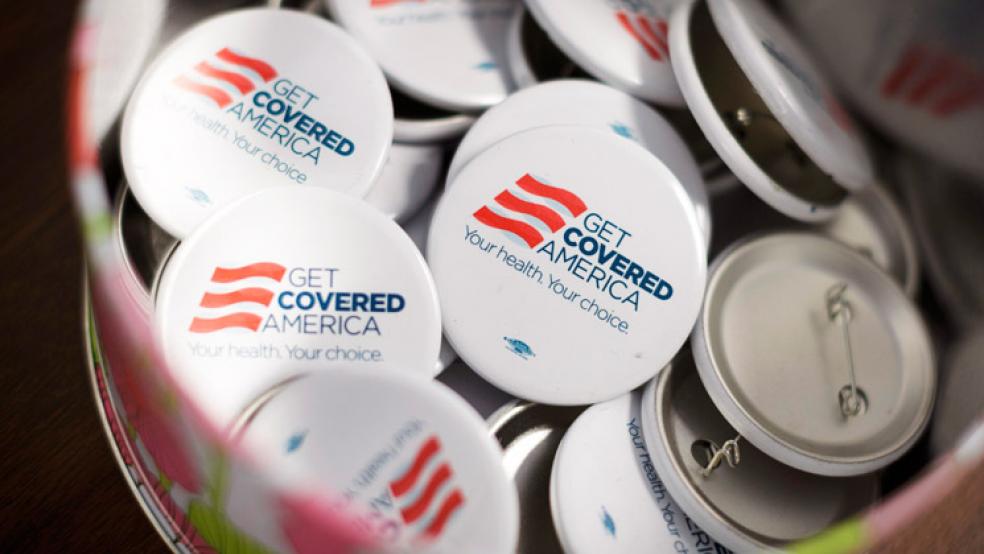Now that Obamacare enrollment has closed — with some 7.1 million enrollees, as the president crowed Tuesday — the next big test for the reform will be whether its spurs competition among health insurers to lower costs.
While competition may thrive in the largest states, it may not hold true in mid-sized and smaller states, where only a handful of insurers dominate the new health care exchanges. Some radical changes may be necessary if competition is to play a role in reducing overall health spending.
Related: Obamacare Support and Signups Surge on Deadline
Prior to the passage of the Affordable Care Act (ACA) in 2010, individual states were dominated by a few insurers. A 2009 study by the Center for American Progress, a progressive think tank, found that "in at least 21 states, one carrier controls more than half of the market. More than half of the market is controlled by two carriers in 39 states."
How much has changed since the advent and launch of Obamacare? Since the health care exchanges have only been operating for six months, it may be too early to tell, although it appears that only a few states will see an increase in competition.
A recent study by the Kaiser Family Foundation looked at seven states: California, Connecticut, Minnesota, Nevada, New York, Rhode Island and Washington. The two most populous of those states — California and New York — “appear to be noticeably more competitive than their 2012 individual markets as a whole.” The other states showed mixed or inconclusive results.
The Kaiser study offered this insight:
The long-term success of the exchanges and other ACA provisions governing market rules will be measured in part by how well they facilitate market competition, providing consumers with a diversity of choices and hopefully lower prices for insurance than would have otherwise been the case.
Why Competition May Not Develop in Most Markets
If you are buying a car, you have a choice of models, makes and dealers. Dozens of manufacturers are competing for your business and are negotiable on price, features and financing.
Health insurance, though, may not offer that kind of consumer-friendly flexibility. Insurers set the prices, out-of-pocket expenses and fix policy options. While you may have several choices of policy configurations, when there are only a handful of insurers offering them, there may not be any wiggle room on premiums. When the field of options is narrow, insurers can keep prices high with few alternatives.
This paradigm is further squeezed by the fact that insurers can't sell policies on a national platform. They must sell state by state. This strange situation is due to the McCarran-Ferguson Act, passed in 1945. The law not only mandates state marketing of insurance, it forbids federal regulation of the industry.
There is no true national marketplace for health plans, even with the passage of Obamacare, which provided for state exchanges or government-run exchanges for states that didn't set up their own programs.
Related: What’s Next for Obamacare? 5 Things to Watch
Instead of competing in a 50-state market with a large pool of potential customers, insurers must focus on individual states. This is not only costly, it's inefficient. Imagine being a vehicle or appliance manufacturer and having to come up with 50 different price lists and models for products that are the same no matter where they are sold.
What could seed the creation of a more competitive national exchange? Other than repeal of the McCarran-Ferguson Act, there are two useful models already in place.
- Private health insurance exchanges. Mimicking Obamacare’s online exchanges, these are marketplaces in which private insurers participate. Employers are increasingly using them instead of self-insuring or only offering one insurer. Although it's not known how many employees utilize the exchanges, recent moves by AT&T, IBM and Time Warner show that major employers are moving Medicare-eligible retirees into the exchanges.
- A much older and larger example can be found in the Federal Employees Health Benefits Program (FEHBP), which was established in 1959 and now services 8 million employees. Federal workers and members of Congress can choose from a variety of private insurance plans. Nearly 1 million employees switched plans in the early 1980s when more choices were made available. Prices also dropped due to the competition. "The FEHBP illustrates the effects of competition in health care," noted a report by the Heritage Foundation, a conservative think tank.
Obamacare's effectiveness in lowering premium costs through competition will largely depend upon the state and the broad offerings of its exchanges. Those that foster robust competition for pricing will probably make the case. But smaller states that will still be dominated by a few insurers will not move the dime.
Another factor is the pool of customers that the public exchanges attract. If they consist of mostly middle-aged Americans with a host of expensive maladies, then insurance claims will rise and insurers will raise premiums or ratchet up out-of-pocket costs. If younger people stay away from the exchanges — their sign-ups rates have been disappointing — then that might discourage insurers from offering policies. The whole idea of private insurance is that healthier people diversify the pool and help subsidize acute care and the chronically ill.
Perhaps Obamacare will evolve to allow for national marketing of insurance, which is a missing link in the structure of the public exchanges. Insurers could better realize economies of scale in administration, underwriting, claims and marketing. While such an idea has long been suggested, it's highly unlikely in the current political climate, especially as the country lurches into the mid-term election season.
Top Reads from The Fiscal Times:






